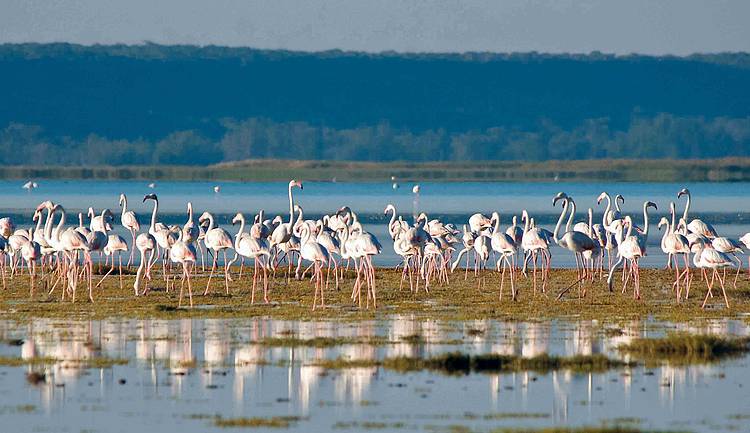The Tsimanampesotse - Nosy Ve Androka biosphere reserve - a conservation learning site for sustainable human development
Posted on August, 14 2018
Tsimanampesotse - Nosy Ve Androka brings together people, sea, and the thorny forest. Since 28th July 2018, it is the 5th UNESCO biosphere reserve in Madagascar.
A biosphere reserve is an ecosystem deemed globally important for its rich biodiversity and need for conservation. Each biosphere reserve promotes solutions that both help conserve biodiversity, and ensure that this conservation does not hinder sustainable development. These solutions are discussed through dialogue surrounding poverty reduction, the improvement of human well-being, and respect for cultural values.Located in the south-west of Madagascar, Tsimanampesotse - Nosy ve Androka is a mosaic of terrestrial, coastal and marine ecosystems. It includes various habitats (coral reefs, islets, beaches, mangroves and gallery forests), and it is also home to the largest forest block of Malagasy thorny forests. It also has large limestone formations that house caves that are important for both scientific and ecotouristic purposes.

The coral reefs of the biosphere reserve are the natural refuge for various species of fish, sea turtles and marine mammals (dolphins, whales, dugongs). Humpback whales come to fowl off the island of Nosy Ve. The terrestrial part of the biosphere reserve is home to an extraordinary amount biodiversity, of which up to 90% of species are endemic to Madagascar. The thorny forest’s most emblematic animals are the Radiated Tortois, the Ring-Tailed Lemur, and the Grandidier’s Mongoose. The latter is one of the rarest mongooses in the world, and lives only in limestone cave habitats.
The core of the biosphere reserve is composed of the Tsimanampesotse National Park and the Nosy Ve - Androka Marine Park, managed by Madagascar National Parks; and Amoron'i Onilahy Category IV protected area, managed by local communities supported by WWF. Around these three protected areas are community-managed areas that work towards the sustainable management of forests and fisheries. Then come the zones of activity towards community areas (villages, cities, cultivated lands). The biosphere reserve provides work and feeds local communities, which mainly practice agriculture, livestock and fisheries. It is worth mentioning that community tradition still plays an important role in people’s daily lives.
Tsimanampesotse (Nosy Ve Androka) joins Madagascar’s four other biosphere reserves: Mananara North, Sahamalaza (Ramada Islands), Toliara Coast, and Kirindy Mite (Belo Sur Mer).

